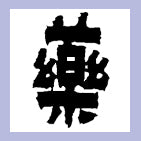Введение в синдром жара-сырости мочевыводящих путей (Ре Линь Чжэн в ТКМ)
Обзор
Синдром «жара-сырости» в мочевыводящих путях, известный как Ре Линь Чжэн (热淋证) в традиционной китайской медицине (ТКМ) — это состояние, характеризующееся дискомфортом при мочеиспускании, вызванным избыточным накоплением тепла и влаги в нижней части мочевого пузыря и мочевыводящих путях. В современной медицине оно соответствует инфекциям мочевыводящих путей, таким как цистит, уретрит и острый пиелонефрит, и часто встречается в клинической практике.
Этиология и патогенез
Согласно теории ТКМ, Ре Линь Чжэн возникает из-за внешних или внутренних факторов, которые нарушают баланс организма Ци (жизненная энергия) и Инь-Ян . Основные причины:
- Факторы, связанные с питанием : чрезмерное употребление острой, жирной или содержащей алкоголь пищи, которая генерирует внутреннее тепло и влажность.
- Внешние возбудители : воздействие влажной или жаркой среды, в результате чего влажное тепло проникает в нижнюю часть тела.
- Слабая конституция : существующий дефицит Ци или Инь что приводит к уязвимости к патогенным воздействиям.
Патогенез включает в себя влажное тепло, препятствующее функции мочевого пузыря. Ци трансформация и обмен воды, что приводит к таким симптомам, как частое мочеиспускание, жжение и мутная моча.
Клинические проявления
У пациентов обычно наблюдаются:
-
Мочевые симптомы :
- Частое, неотложное и болезненное мочеиспускание ( Сяо Бянь Цзи Тун ).
- Темно-желтая или мутная моча ( Няо Се Хуан Чжи ).
- Подтекание мочи или неполное опорожнение.
-
Системные симптомы :
- Боль в нижней части живота или пояснице.
- В тяжелых случаях — лихорадка, жажда или раздражительность.
-
Диагностические признаки ТКМ :
- Красный язык с желтым налетом ( Хун Шэ Хуан Тай ).
- Быстрый, скользкий пульс ( Шу Хуа Май ).
Дифференциальная диагностика
Ре Линь Чжэн следует отличать от других мочевых синдромов ТКМ:
- Синдром мочекаменной болезни ( Ши Линь ) : внезапные, сильные колики из-за камней в почках/мочеточниках.
- Синдром гематурии с примесью крови ( Сюэ Линь ) : гематурия из-за повреждения кровеносных сосудов из-за перегрева.
- Синдром хронической усталости мочевыводящих путей ( Лао Линь ) : рецидивирующие симптомы с основной причиной Ци дефицит.
Принципы лечения
ТКМ стремится устраняет жар, устраняет сырость и способствует диурезу с использованием травяных формул, иглоукалывания и корректировки рациона питания.
-
Фитотерапия :
-
Классические формулы :
- Ба Чжэн Сан (Восемь-корректирующий порошок): Очищает мочевой пузырь от жара и выводит влагу.
- Сан Джин Тан (Три-золотистый отвар): лечит сильную жару с помощью дополнительных мочегонных трав.
-
Отдельные травы :
- Цюй Май (Гвоздика): Способствует мочеиспусканию и облегчает боль.
- Че Цянь Цзы (Подорожник): снимает жар и уменьшает воспаление.
-
Классические формулы :
-
Акупунктура :
- Ключевые моменты: Чжун Цзи (CV3), Гуань Юань (CV4), Сан Инь Цзяо (SP6) для регуляции мочевого пузыря Ци и облегчить боль.
-
Диета и образ жизни :
- Избегайте острой, жареной и алкогольной пищи.
- Увеличьте потребление воды и употребляйте охлаждающие продукты (например, огурцы, груши).
- Выполняйте легкие упражнения, такие как Тайцзи для улучшения Ци поток.
Современная медицинская перспектива
Западная медицина классифицирует Ре Линь Чжэн как инфекции нижних мочевых путей (ИМП), вызванные такими патогенами, как Escherichia coli . Диагностика основана на анализе мочи (лейкоциты, нитриты) и посеве. Лечение включает антибиотики (например, нитрофурантоин, ципрофлоксацин), хотя резистентность к ним вызывает всё большую озабоченность.
Интеграция ТКМ и западной медицины
Сочетание ТКМ с антибиотиками может повысить эффективность и снизить рецидивы:
- Травы ТКМ устраняют остаточную сырость и тепло после лечения антибиотиками.
- Иглоукалывание может облегчить желудочно-кишечные побочные эффекты, связанные с приемом антибиотиков.
Профилактика
- Соблюдайте гигиену, особенно в области половых органов.
- Избегайте длительного сидения и ношения тесной одежды.
- Укрепляйте иммунитет с помощью сбалансированного питания и борьбы со стрессом.
Заключение
Ре Линь Чжэн Отражает целостный подход ТКМ к здоровью мочевыводящих путей, подчёркивая взаимодействие между внутренним балансом и внешними патогенами. В то время как современная медицина предлагает целенаправленную антимикробную терапию, ТКМ предлагает устойчивые решения, устраняющие первопричины. Коллективный подход может оптимизировать результаты лечения пациентов с рецидивирующими или хроническими заболеваниями мочевыводящих путей.
